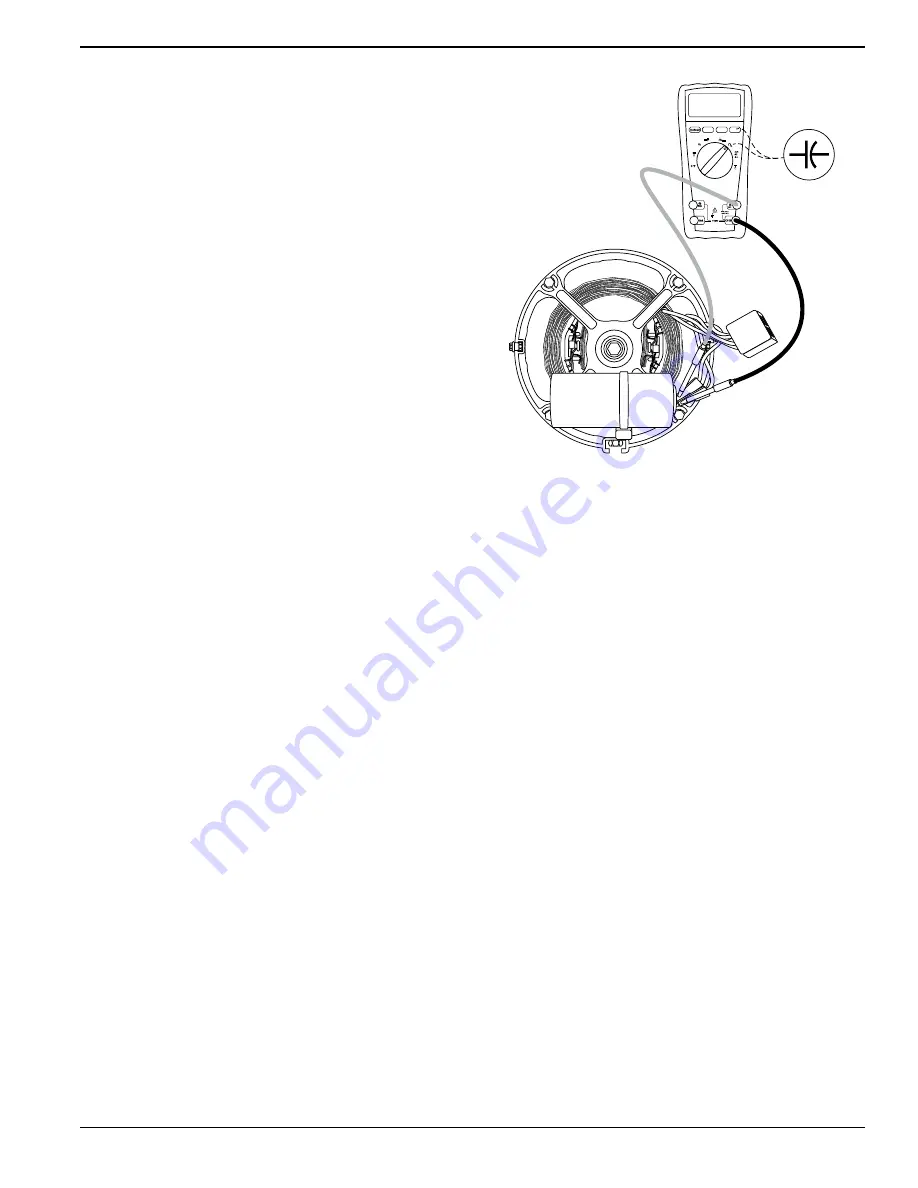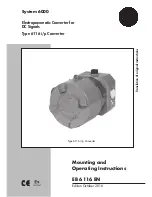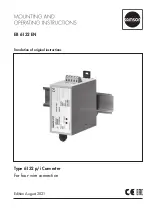
Section 1 Capacitive Discharge (Brushless)
Diagnostic Repair Manual
7
5.
If the field flash was successful, the generator
should produce approximately 240 VAC at the
main circuit breaker of the generator when the
START-RUN-STOP is set to START.
IMPORTANT NOTE:
Do not field flash alternator more
than two times in sequence. If the unit has not produced
power after two attempts, other issues exist and need to
be addressed.
Results
1.
Refer to flow chart.
Test 6 – Check Capacitor
General Theory
The brushless rotor system relies on the charging and
discharging of a capacitor to induce voltage into the rotor,
and also maintains voltage once 240 VAC is achieved. If
the capacitor fails, only residual magnetism of the rotor
will be measured at the main breaker.
NOTE:
The voltage of a brushless capacitive discharge
generator will start low and increase as load is applied.
IMPORTANT NOTE:
The capacitor may need to be
discharged before testing. A capacitor can be discharged
by crossing the terminals with a metal insulated screw
driver.
IMPORTANT NOTE:
Use proper protective equipment
when dealing with a capacitor that has exploded.
Procedure
1.
Consult the owner’s manual of the meter being used
for directions on measuring capacitance.
shows a typical meter and how to check capacitance.
2.
Connect meter leads directly across the terminals
of capacitor. The rated µf (micro farad) of the
capacitor is marked on the side of the canister.
3.
The meter should display the correct µf reading ±
5µf. If anything other than the indicated rating is
displayed, replace the capacitor.
Results
1.
Refer to flow chart.
2.
Visually observe the capacitor.
a. A capacitor that has gone bad has a tendency
to explode. Use caution when dealing with an
exploded capacitor, the gel from inside a
capacitor can cause skin irritation.
b. A capacitor is defective if terminal connections
are loose on the canister.
c. A capacitor is defective if it wobbles while
sitting on a flat surface.
d. If any of these traits are observed, replace
capacitor.
Figure 1-9. Capacitor Test Points (Alternator
Configuration “A”)
Test 7 – Test Brushless Excitation
Winding
General Theory
An excitation winding is used to charge a capacitor. It
discharges and charges, releasing a voltage that is
induced into the rotor. If the excitation winding fails, only
residual magnetism of the rotor will be measured at the
main breaker.
NOTE:
The resistance of stator windings is very low. Some
meters will not read such a low resistance, and will simply
indicate CONTINUITY. Recommended is a high quality,
digital type meter capable of reading very low resistances.
IMPORTANT NOTE:
The capacitor may need to be
discharged before testing. A capacitor can be discharged by
crossing the terminals with a metal insulated screw driver.
Procedure
1.
Disconnect Red Wires from capacitor.
2.
Set DMM to measure resistance.
3.
Connect meter leads to excitation winding leads.
a. Reading should be approximately to the values
found in the specifications.
4.
Connect a meter lead to one excitation winding
lead and connect the other meter lead to a clean
frame ground, INFINITY should be measured.
Repeat this step with the other excitation lead.
5.
Isolate the stator wire so the stator is disconnected
from the receptacle panel and the capacitor.
NOTE:
Isolate all main stator leads before proceeding.
003995
59.0
μf












































